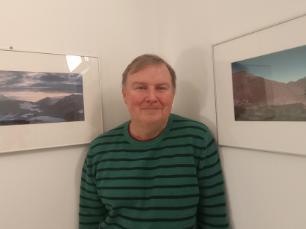Our Next Event 09/01/2024
Published: 2 January 2024
WATHCING THE WATERS: BEACON AND SENTINEL SITES IN WESTERN SCOTLAND
ABOUT THE PAPER
Western Scotland, incorporating the Western Mainland and islands, has several Gaelic placenames along its coasts that are suggestive of a network of observation points guarding maritime routes. Most of the places are hills, with the Gaelic names Teine (fire) and Faire (watch/sentinel). A combination of desk-based study and site visits demonstrates that the sites allowed for the observation of key waterways across long distances, enabling those manning the sites to warn their community of a possibly imminent attack. Where a series of beacon or watch places occur close together in a logical sequence, it indicates a co-ordinated approach across an island or wider geographic area, while also suggesting that many of the placenames denoting beacon and watch sites may have been lost. As with many pre-modern placenames, providing precise dates for the names of the sites is difficult, and the paper includes a discussion of the likely context of the names. A co-ordinated defence system implies a high level of resources and planning at least at the local or regional level, and this knowledge helps to date the sites. Further clues to dating are possible by examining the political and military context of the medieval period. It is determined that the sites could belong to multiple periods from the Viking Age on, and it is likely that many of them were used at various times over the centuries. The paper focusses on the era of Scandinavian Scotland.
ABOUT THE SPEAKER
Despite coming from Australia with its lack of medieval connections, Dr. Shane McLeod has a strong interest in the Viking migrations to Britain and Ireland, including issues of migration routes and demographics, cross-cultural identities and migrant adaptation. His work on migration led to an investigation of the sex ratios of Viking settlers, resulting in one of the formative articles in the surge of interest in ‘shieldmaidens’. He has worked extensively on the ‘great army’ in England, including a book and numerous papers. He is also interested in performative aspects of Viking funerals and was part of the Funeralscapes team who hosted re-enactments of medieval funerals at archaeologically attested burial sites on the Isle of Eigg in 2014. He has also published the Viking Burials in Scotland website as an aide to students and to facilitate site visits. He is currently working on The Norse and the Sea project, which investigates aspects of the maritime cultural landscape of the Viking Age and Norse periods with a focus on western Scotland.
VENUE DETAILS
Tuesday, January 9th | 17:30
The Boyd Orr Building
Room 412 (Lecture Theatre B)
University Avenue
Glasgow
G12 8SP
First published: 2 January 2024
<< Archives


